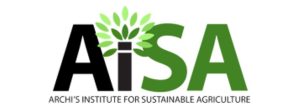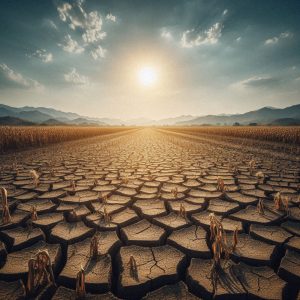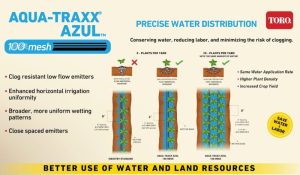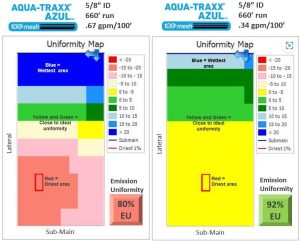Source: The Fresno Bee
Written by Robert Rodriguez
Posted June 27, 2015
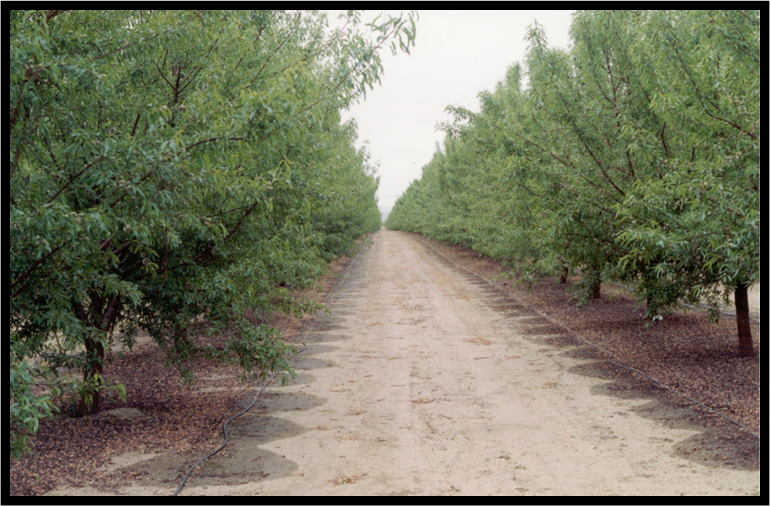
Madera County farmer Tom Rogers thought he knew a lot about how to irrigate his family’s 175-acre almond ranch. But several droughts, including the current four-year dry spell, made him reconsider his approach on how to get the most out of his ever-shrinking water supply.
For the last two years, Rogers has received no surface water, relying purely on groundwater wells to keep the ranch’s trees alive and producing.
Nothing is taken for granted on the Rogers’ farm, and nothing is wasted, especially water.
Rogers is among a growing number of farmers using technology to make every drop of water count. Over the years, Rogers has installed sophisticated sensors to measure soil moisture, drip irrigation and automatic irrigation gates for increased efficiency. He also waters for shorter lengths of time, but more frequently than he used to. The result, he says, is a 25% savings in water.
“In a way, it is like we have had to re-learn everything we knew about irrigation,” Rogers said. “But we feel real confident that we are doing the right things.”
The state’s ongoing drought has shined a spotlight on farmers and their water use. Critics have questioned the amount of water that farmers consume — about 40% of the state’s supply — and how they irrigate millions of acres of farmland.
Much has changed in the way farmers water their crops. More than two decades ago, 67% of the farmers in California relied on flood or furrow irrigation while just 16% used drip irrigation. With the development of higher-value crops, occurrences of water shortages and demands for higher yields, irrigation technology expanded as farmers installed more efficient irrigation systems. Instead of flooding a field, drip and subsurface irrigation delivers water to the plants root zone using a system of tubing.
Almonds are one of the state’s largest and most valuable crops, and growers of the nut have been quick to adopt drip irrigation. In 2013, 70% of the industry was using drip irrigation, according to the Department of Water Resources. Over the last two decades, the use of drip irrigation has reduced the amount of water it takes to grow a pound of almonds by 33%, according to the Almond Board of California.
Overall, 42% of California agriculture uses drip irrigation, 43% flood irrigation and 15% sprinklers.
Doug Parker, director of the California Institute for Water Resources, said flood irrigation still has a role in agriculture and is used to water several crops, including rice, alfalfa and some cotton and grains.
“I don’t think we will ever get below 25% of California’s agriculture being flood irrigated — it just doesn’t make sense for some crops,” Parker said. “And when it is wet and rainy, these systems make sense. When they don’t make sense is when we are in a drought. And if we continue to have more water shortages, things will tighten up.”
Current technology allows farmers to determine if their trees, vines or plants are getting the appropriate amount of water, down to the exact inch of soil. But there is also a growing demand for how to use the reams of data farmers can now get from weather stations, sensors and even unmanned aerial vehicles that can detect plant stress from under watering.
Experts say the future in irrigation technology will involve more precision, automation and data management. But don’t expect a simple solutions like the urban water users switching to low-flow toilets, said David Zoldoske, director of the Center for Irrigation Technology at Fresno State.
“It doesn’t work that way, despite what some people think,” Zoldoske said. “There are multiple components to agriculture irrigation. It isn’t just one thing.”
Venture capitalists have become attracted to finding solutions to agriculture’s water dilemma. Fresno State has also become a leader in developing water technology start-ups through its Water, Energy and Technology center.
Zoldoske said that while the public may think that drip irrigation means that plants, trees and vine use less water, the opposite is true. The plants receive more water, it’s just delivered more precisely.
“It is all about yield and farmers are getting more crop per drop,” Zoldoske said. “At the same time, they are typically applying less water to the field.”
California’s annual agriculture revenue increased 88% from 1967 to 2010, according to the state Department of Food and Agriculture
At Fresno State’s student-run farm, orchard technician Rob Willmott uses an irrigation system that he can monitor with an app on his phone. The system will send him an alert when the flow rate pressure on the water pump is operating too low or too high. If the system is operating too high, that means it’s wasting water and he can shut the pump off from his phone and then investigate the problem. The same is true if it is too low and not enough water is getting to the farm’s orchard.
Lance Donny, founder of OnFarm Systems, an early leader in data management, sees an ever-increasing demand for systems to help farmers decide when to water and how much to apply. He likens the information to a fuel gauge in a vehicle.
“We need to take all that information and turn it into actionable information,” Donny said. “Farmers want to know what the sensors tell them. In other words, how much fuel do they have in the tank.”
Two firms working out of Fresno State’s WET center are applying that concept in the field and could represent the next wave in irrigation technology.
Brian Bassett, founder of H2O Optimizer, collects data from multiple sensors in the field and provides a recommendation to farmers about their irrigation. He has 20,000 to 30,000 acres, mostly trees and vine, using his system.
“We take all the information we collect and run it through models and present that to the grower with recommendations,” Bassett said. “Depending on the soil variability and sensor data we can tell growers how long to irrigate and on what day.”
Bassett’s company provides a weekly report, but with the help of a Silicon Valley investor, he is hoping to provide a real-time recommendation.
PowWow Energy received a $2.3 million grant from the California Department of Energy to implement its system of data management. The company gathers data from the field and issues a recommendation to the grower in a text message.
For example, company founder Olivier Jerphagnon said, a text message could warn the grower that they are watering too much or not enough.
“Food has a huge water footprint, but the agriculture industry also produces thousands of jobs and the economic impact of a gallon of water is tremendous,” said Jerphagnon. “We’ve never met a grower who wasted water on purpose, and our job is to help them make the right decision on how to use it.”
Written by Robert Rodriguez via The Fresno Bee

